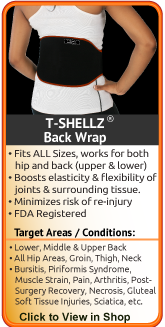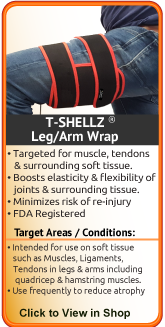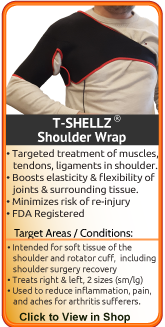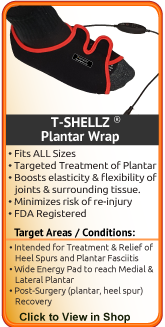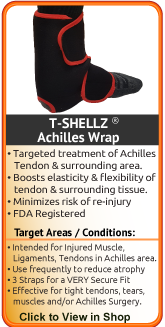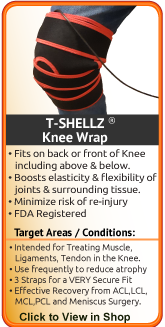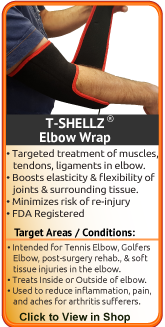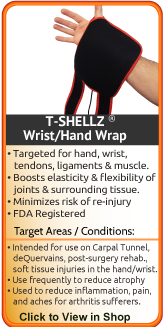|
| Athletic Pubalgia Information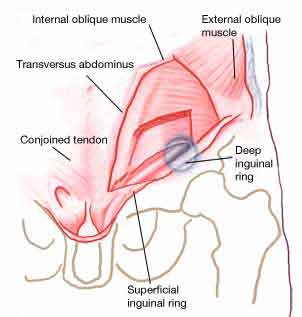 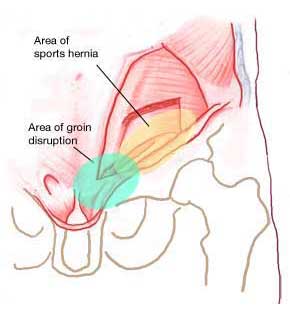 Athletic pubalgia is often referred to as a sports hernia, groin disruption or Gilmore's groin, it is a common groin injury experienced by athletes. It was first recognized as "Gilmore's groin" in 1980, following the groin repair treatment of some professional soccer players who were unable to participate in their sport for a few months because of an undiagnosed groin injury. Jerry Gilmore developed a surgical repair technique for this condition. Generally athletic pubalgia (Gilmore's groin or sports hernia) is located more laterally (on the side) and proximally (nearest to the midline and point of attachment) and a groin disruption includes more of a range of abnormalities. However, they are very similar conditions and difficult to differentiate, therefore they tend to be treated in the same way. For our purpose we will look at these injuries as one condition. Athletic Pubalgia was first recognized as "Gilmore's groin" in 1980, following the groin repair treatment of some professional soccer players who were unable to participate in their sport for a few months because of an undiagnosed groin injury. Jerry Gilmore developed a surgical repair technique for this condition. Generally athletic pubalgia (Gilmore's groin or sports hernia) is located more laterally (on the side) and proximally (nearest to the midline and point of attachment) and a groin disruption includes more of a range of abnormalities. However, they are very similar conditions and difficult to differentiate, therefore they tend to be treated in the same way. Athletic pubalgia involves severe musculotendinous injuries (relate to muscles and tendons) that result in chronic groin pain and a dilated superficial inguinal ring. Generally a tear in one of your lower abdominal muscles (oblique muscles, rectus abdominus muscle) near the back wall of your inguinal canal (narrow passage through your abdominal wall in the lower region on either side of your pubic area), or in your connective tissues (conjoined tendon, inguinal ligament, transversalis fascia, or aponeurosis) where your muscles meet the bones and other tissues of your pelvis and/or pubic bone will be present. Athletic pubalgia results in a "hidden" hernia that has no visible bumps or lumps but causes pain in your lower abdomen and groin (especially when twisting or turning while running at a high speed). Often you will experience a torn adductor muscle along with this injury. Note: An inguinal hernia involves a tear in a body tissue (normally a muscle) that shows a visible bulge or bump in your lower abdomen. Athletic pubalgia has no obvious hernia (bump or bulge). What Causes Athletic Pubalgia?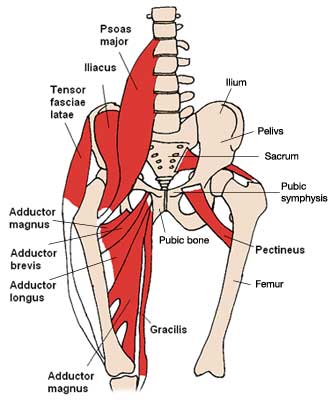 Athletic pubalgia is generally considered a chronic condition (long term and/or recurring) and is a result of repeated trauma or overuse of your groin area. It generally begins slowly as a result of inflexible, tight and eventually weakened and damaged hip flexor muscles (psoas major, iliacus, tensor fasciae latae) and inner thigh/groin muscles (adductors, sartorius, pectineus, gracilis) which bend your pelvis forward and stretch your lower abdominal muscles. Activities like hockey, soccer, tennis, distance running, football, rugby and track & field events promote this type of action. These activities also involve a lot of repeated twisting and turning. The combination of these movements promotes a force imbalance at your pubic bones and pubic symphysis (joint between the 2 pubic bones) that stress the posterior (back) wall of your inguinal canal (passage through your lower abdominal wall). This can cause a disruption of your inguinal canal and lead to weakened and torn abdominal muscles and tissues, in which your muscles, tendons and ligaments pull away from your pubic bone. Specific injuries range from a torn external or internal oblique muscle or conjoined tendon, to a loosened transversalis fascia, or a split between your conjoined tendon and inguinal ligament (among other injuries), an entrapment of the ilioinguinal or genitofemoral nerves will also often occur.  Vigorous participation in the above sporting activities can overload the bones and tendons at your pubic symphysis and actually cause more than one groin injury at a time (for example osteitis pubis or adductor tendinopathy with athletic pubalgia). Men are 10 times more likely to experience athletic pubalgia than women, however women do get it. The most likely sufferers are "weekend warriors" who participate in strenuous activities during the weekend, however do not exercise regularly during the week (this can overwhelm and put stress on your body). Other factors that influence your risk of having athletic pubalgia are age-related weaknesses as a result of degeneration in your bones and muscles, previous surgery, obesity, and defects in your groin area from birth. Athletic Pubalgia SymptomsIf you have athletic pubalgia there are often no obvious external symptoms or signs. 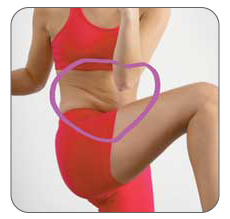 However, you generally experience a deep or sharp pain and discomfort from your lower abdomen and pelvis to your urogenital and groin area (your lower stomach muscles around to your pubic bone and under to the bottom of your body between your legs) especially with sudden movements or when exerting yourself in activities that involve kicking, twisting, side-stepping, sprinting, and lifting. Some people experience testicular pain as well. Activities that increase intra-abdominal pressure like resistance sit-ups, coughing or sneezing can aggravate the pain. You will often feel pain and tenderness on one side of the abdomen or groin near the pubic tubercle (bump), which radiates into the genital area, and can move down into the hip and/or inner thigh area.  This pain and accompanying stiffness can be experienced during or after activities, and can last for hours or weeks. You may find it difficult to get out of your car a few hours after your activity and/or find it hard to get out of bed the next morning. Your athletic pubalgia pain will often go away with rest, however it generally returns when you resume the activity. Weakness in the upper thigh area with adduction (bringing upper leg or hip closer to the centre of your body) can be seen and/or experienced with athletic pubalgia when running, walking or kicking. Should you seek medical attention?This is up to your discretion; however any continued discomfort in your groin or pelvis area should be investigated. If you think you are experiencing athletic pubalgia, then it is recommended that you seek professional medical attention. If you experience any of the symptoms noted below, it is recommended that you seek immediate attention:
Once you have been diagnosed with athletic pubalgia and your physician has recommended conservative treatments, we recommend a quick read through our conservative treatment page. This page will also prove helpful to you ff you have had surgery for this condition and you are at the recovery stage where your physician has recommended conservative treatments for home recovery. Diagnosing Athletic PubalgiaGenerally speaking, if a physical exam doesn't reveal an inguinal hernia or other causes of groin pain, the condition is classified as athletic pubalgia. It is one of the most difficult groin conditions to diagnose, because it is a subtle muscle injury with no visible hernia (bulging tissue). To help your doctor achieve a proper diagnosis, he/she will begin with a medical history about you, your current condition and symptoms. He/she will inquire about the intensity of your present pain, the duration of your symptoms and the limitations you are experiencing. Details about what instigated the problem, when it started, and whether or not you have ever had treatments for this or a similar condition in the past, are very helpful in assessing your injury. 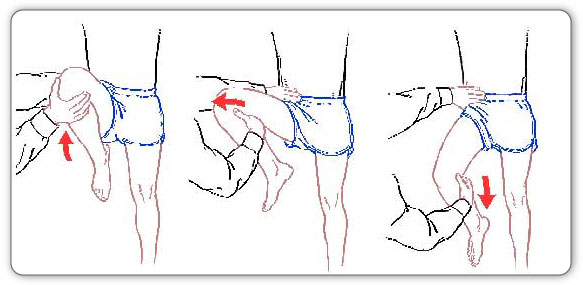 A physical examination will be performed to determine if you have any signs of athletic pubalgia or other pelvic or groin injuries. Your doctor will visually assess and palpate (feel) the bones and soft tissue in and around your pelvis and groin area as well as your genital area, hip and upper thigh to evaluate sameness (symmetry), recognize differences and identify pain and tenderness. This will help to discover any abnormalities, such as mild or severe inflammation, fluid, bone or tissue deformity, and weakened muscles. He/she may ask you to complete a series of abdominal and hip movements such as doing a sit-up or rotating your hip inward to see what motions cause pain, weakness, or instability. He/she will also evaluate your gait (the way you walk) to determine if you have any adductor or other muscle weakness. Most Common Athletic Pubalgia Diagnostic Tests:Although diagnostic tests will not identify athletic pubalgia, they are often used to rule out other conditions that cause groin and abdominal pain. 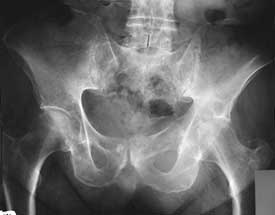 X-rays will provide a two-dimensional image of the overall structure of your pelvis. They are helpful in identifying pelvis instability, abnormal bone shapes (bone spurs or bone cysts, fractures, wear and tear on the joints) and/or other groin or hip problems. A herniography (x-ray involving an injection into the membrane of your abdominal cavity) is rarely used anymore, as other diagnostic tests are available and there is a risk of sticking the needle into your intestines. Isotope Bone Scans are used to identify bone abnormalities, such as a fracture or infection of the pubic bone. It will also identify whether other groin conditions are present (osteitis pubis). 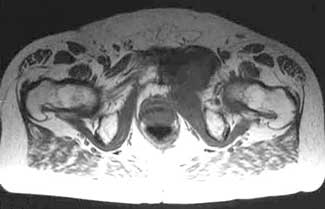
MRIs (magnetic resonance imaging) will provide more detailed information and will help to evaluate the soft tissues in and around your groin and pelvis (muscles, tendons, ligaments, fascia, and other connective tissues). It can identify ligament or tendon damage, and can help to determine the extent of your injury, the displacement and degree of your tear or inflammation, as well as other associated groin conditions. Diagnostic ultrasound (ultrasonography) or CT scans (computerized tomography) will be used to provide a more thorough 2 or 3-dimensional assessment of the soft tissues, organs and bones in and around your groin and pelvis. Diagnosing Athletic PubalgiaTreating athletic pubalgia can be challenging, because there are no tests or x-rays that will prove its diagnosis. As a result, it is often misdiagnosed and treated initially as a pull or strain, which involves a conservative treatment approach. Often athletic pubalgia will not heal on its own, even with conservative treatments. Therefore, surgery is often used to fix the injury and permit you to return to your daily routine and sports activities. Your doctor will consider your activity level, your age, the location and severity of your groin pain, as well as how long you have had it, the symptoms you experience and any other associated groin injuries when determining the best treatment for you. Athletic Pubalgia Alternative Therapies, Exercise and Support SystemsPhysical Therapy is a beneficial way to help diminish pain in the soft tissues, restore weakened muscles and improve groin, pelvis, hip and leg strength and mobility. The type of physical therapy and the duration will be dependent on the extent of your athletic pubalgia. Acupuncture, massage or chiropractic sessions have also been known to reduce pain and improve muscle and bone alignment experienced with groin pain. 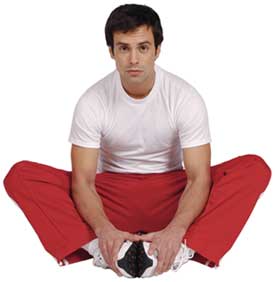 Once your athletic pubalgia pain starts to decrease (within a few weeks), a physiotherapist will also set up an individualized strengthening and stretching exercise program for you to improve the condition of your abdominal, pelvic, groin, hip and leg muscles. This will also include endurance activities such as water exercises and/or swimming, stationary cycling, and power walking. Your program will be based on your needs and abilities, and will help to improve your range of motion and allow you to return to performing your normal routines. Individuals will often exercise or lift weights on their own to try and build up their strength; however in doing so, they can do more damage. It is extremely important to restore your range of motion, and to stretch and strengthen your muscles properly as they may have weakened during the period of non-use. A personal trainer or physiotherapist will help to ensure your rehabilitation process is effective. For best, long-term results use the Leg TShellz Wrap® (on the hip and thigh) in conjunction with physical therapy and an exercise program. 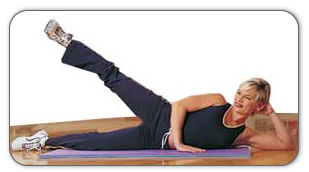 To increase your comfort and prevent further damage you may want to use a groin and/or upper thigh support, brace or compression short which will help support the area, and eliminate pulled abdominal, upper thigh and groin muscles, reducing stress on the injured tissue. Some of these are also designed for heat retention to prevent further strain. These can be used until your injury is gone or during contact/active sports for additional stability. However they should not be worn at all times, as they can limit muscle development, cut off circulation and impede healing of your muscle tissue. Evaluate how you use your groin, stomach, hip and thigh muscles in daily activities to determine if you can decrease stress on your tissues (eliminate sudden twisting and turning motions if possible). This may involve changing your technique and/or using correct or supportive equipment (proper shoes, mobility aids) to help you perform them more effectively and safely. Taking more frequent breaks during your work or activities can also alleviate stress. Speak with an occupational therapist or a professional in your specific activity or work setting to get the proper information. Learn More About Muscle Injuries & TreatmentsI want to learn more about Post-Surgery Recovery I want to learn more about muscle injury home treatment using the TShellz Wrap® I want to learn more about Ice & Heat: Which Is Better For Muscle Strains/Spasms? Do I Need Muscle Surgery?
|


